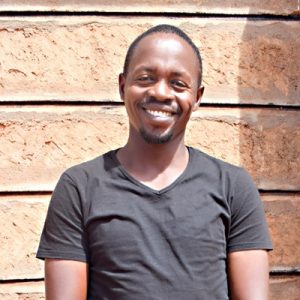This is our second year working with the Kithangaini Kithuluni Self-Help Group to help improve access to reliable, safe water in their community.
We installed a dug well and hand pump alongside a sand dam last year. However, we estimate a well can comfortably support 500 people, so more work needs to be done to ensure this community of more than 15,000 people can access safe water.
"Now we can farm, take care of our livestock because of the sand dam, even though it is a bit far," Mrs. Ann Mbeti, a local farmer, said.
That is why we work together with the community for five years to build sustainable water and sanitation solutions.
Kithuluni Village is a peaceful and vegetated rural area whereby most houses are made of bricks whilst some are also built of iron sheets.
On an average day for the community members, the women and children wake up at 6am to go and fetch water. The women then prepare breakfast for the family as the children prepare to go to school. The men, on the other hand, wake up to go to the farm to get grass for the livestock and also prepare to run errands.
During the day, the women wash the family’s clothes, tidy up the house, wash utensils and prepare lunch as well as supper for the family. Owing to the fact that women and the children spend most of their time around the homestead, they are usually home early while the men arrive back home late.
The first sand dam and hand-dug well system has brought water closer to hundreds, but there are still several more families that live far away. And considering the terrain of this vast area, fetching water is cumbersome and dangerous for many families who must climb up slopes carrying jerrycans of water.
Even though the training on safe water handling has already been done, not all members treat their drinking water due to some myths in the community about the treatment of drinking water, especially through boiling.
We have also learned that the group members are well aware that dirty water can result in diseases, but they seem to have resigned to their fate and drink it untreated anyway.
The community members have improved their sanitation levels as a result of the training done to them. The pit latrines are now cleaned frequently and tippy taps are in use. The homesteads we visited had clean latrines which were not covered but at least they had been cleaned.
What we plan to do about it:
Our main entry point into Kithuluni Community has been the Kithangaini Kithuluni Self-Help Group, which is comprised of local farming households that are working together to address water and food scarcity in their region. This is our second of five years working with this group. These members will be our hands and feet in both constructing water projects and spreading the message of good hygiene and sanitation to everyone.
Training
We’re going to continue training the self-help group members and their communities on hygiene and sanitation practices. Though our visits to households were encouraging, we want to ensure that community members are practicing the day to day habits we are not able to observe. Food hygiene, water hygiene and treatment, personal hygiene and handwashing will all be highlighted during our next review.
Sand Dam
Building this sand dam at a spot further down the river in Kithuluni will bring water closer to hundreds of other people. After the community picked the spot, our technical team went in and proved the viability by finding a good foundation of bedrock. Now, our engineers are busy drawing up the blueprints. We estimate the dam will be 84 meters long and 8 meters high.
We are unified with this community to address the water shortage. As more sand dams are built, the environment will continue to transform. As the sand dams mature and build up more sand, the water tables will rise. Along with these sand dams, hand-dug wells (check out the hand-dug well being installed next to this dam) will be installed to give locals a good, safe way to access that water.
With these projects, clean water will be brought closer to hundreds of community members.

 Sand Dam
Sand Dam
 Rehabilitation Project
Rehabilitation Project































